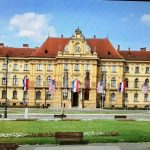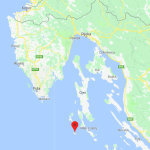As Goran Jungvirth/Poslovni Dnevnik writes on the 22nd of September, 2019, Mirko Kovač, a team leader for scientists and director of the Aerial Robotics Laboratory at the Imperial College London, has achieved yet another great success by creating a new type of biology-inspired robot. This scientist with Croatian roots has thus created a very unusual invention indeed.
The unusual robot uses water to generate gas and as such, launch from the water’s surface. After takeoff, it can travel 26 metres through the air and could be used to collect water samples in hazardous and inaccessible areas, such as during floods and to control the pollution of the world’s oceans, seas and rivers.
Robots that can transition from water to air are desirable in situations such as the above-mentioned scenario, but when it comes to really making them move, it takes a lot of power, which is much more difficult to achieve for small robots.
Now, researchers at the Imperial College London have, under Kovač’s direction, invented a system that requires only 0.2 grams of calcium carbide powder in a combustion chamber. The only moving part is a small pump that brings in water from the surrounding environment, such as a lake, river or, ocean. The collected water and the calcium carbide powder are then combined in the reaction chamber, creating a flammable acetylene gas. As the gas ignites and expands, it displaces the water like a jet, which pushes the robot out of the water and gives it energy to fly up to 26 metres.
“The water-to-air transition is a process that requires a lot of energy, and this is difficult to achieve with small vehicles that need to be light when they’re in flight. We used water-responsive chemicals to reduce the materials the robot needed to carry. Because the chamber is filled passively and the water from the environment acts as a piston, we can create a full combustion cycle with only one moving part, which is a pump that mixes water and fuel,” Mirko Kovač, a robotics researcher with Croatian roots who has researched robots at prestigious universities such as Harvard and Berkeley, told Poslovni Dnevnik.
The robot, weighing a mere 160 grams can “jump” multiple times after filling up its water tank. This can allow it to hover over water and take samples in multiple locations without needing to use additional power, thus successfully saving energy over greater distances compared to an electrically driven robot.
Today, a team of experts led by Dr. Kovač work with their partners in Switzerland to build new vehicles using advanced materials, and field trials of robots in a variety of environments are underway, including monitoring the ocean around coral reefs and coastal energy platforms.
Mirko Kovač is, as mentioned, a Swiss of Croatian roots, and this year Poslovni Dnevnik interviewed him to discuss the potential of robotics development here in Croatia. He then participated in the international DroneDays conference held at the Faculty of Electronics and Computing in the City of Zagreb.
The new Swiss Centre was created in collaboration with the London Laboratory, which Kovač included in collaboration with the FER Laboratory for Robotics and Intelligent Control Systems.
Because of this collaboration, which has been going on for several years now, the Zagreb and London laboratories were awarded the AeRo Twin project from the EU’s Horizon 2020 EU research and innovation program, pushing them rightfully to the very top in the fast paced and ever advancing world of robotics.
Various lectures will be organised, as well as an exchange of scientists, and roboticists from Croatia will be staying in London to see what they can do in a similar sense in Zagreb.
Make sure to follow our dedicated lifestyle page for much more.










